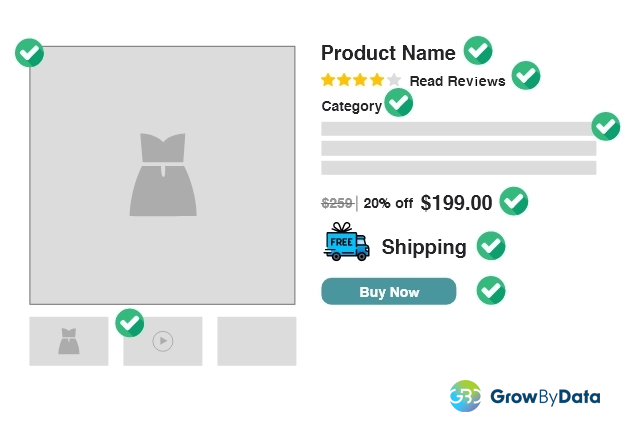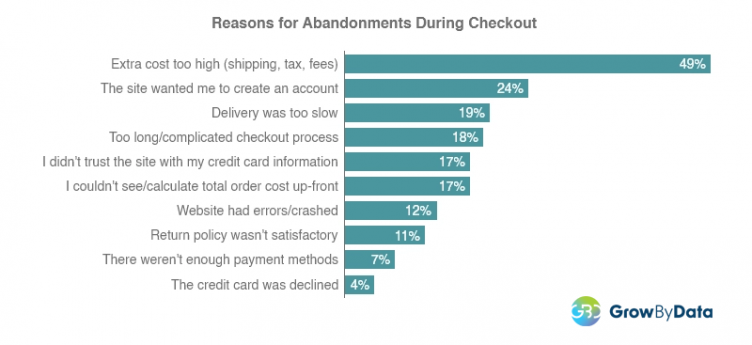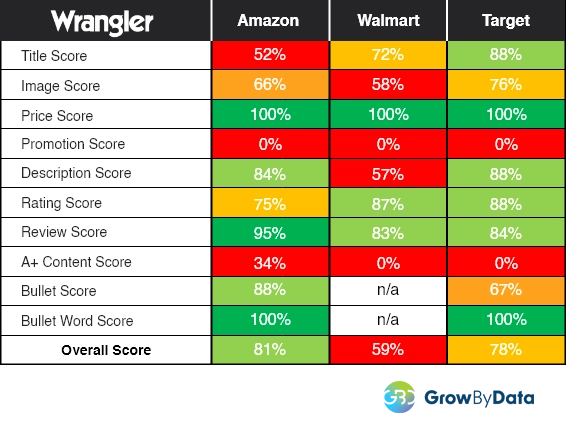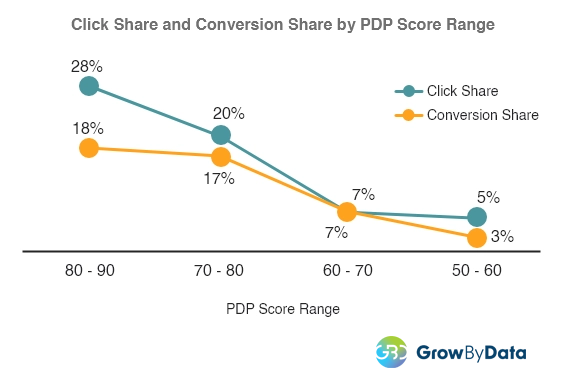The rise of digital technology has shifted more power into the hands of shoppers. Today’s shoppers expect a user-friendly digital shelf that is convenient, personalized, and with an optimized Product detail page. Shoppers are looking for an amazing product experience that enhances their journey.
What is Product Experience Management?
Product Experience Management (PXM) is the process that eCommerce businesses use to deliver the right information at the right place and at the right time aiming to drive sales, increase market share, and build customer loyalty. It ensures that shoppers have the best experience during their purchase journey.

Here are a few reasons why Product Experience Management is incredibly important in communicating your brand identity, creating personalized content, and delivering a compelling product experience to potential customers.
Importance of Product Experience Management
1. Continuously Drive Performance on the Digital Shelf
With the increase of options on almost everything, customers have become increasingly choosier. They can browse for products for hours and not purchase anything.
According to Salesforce, 74% of customers have used multiple channels to start and complete transactions. This means that many customers are quick to abandon a brand or channel if it is not providing sufficient or consistent product information.
All the product information and details on a product page help the shopper decide. Each shopper may be looking for a different detail on a product (price, quality, color, material, description, shipping efficiency, warranty, return policy, reviews, etc.). Providing consistent product information detail on each shopper touchpoint is crucial to driving performance and increasing your sales.
2. Get Your Product to Market Quickly
Speed is everything. You will miss out on sales if you cannot get your offers in the market quickly enough. A good Marketing Intelligence tool allows you to create competitive product attributions and publish them quickly across the channel. It also provides workflows to optimize processes that allow brands to create enhanced product experiences across all channels. Automating and streamlining processes can decrease the time it takes a competitive product to get to the digital shelf. This is especially important with seasonal products. But with trends changing so rapidly these days, it also allows brands to react faster to those changes.
3. Stand Out Over Competitors
Today’s shoppers do their research before purchasing. They have choices from a multitude of brands across many channels. So, it is important to invest in resources and efforts into making the buying experience as great as possible to stand out from the competition. Customers who have an excellent experience with brands spend 140% more than those who had a bad or less stellar experience. Investing in competitive Product Experience Management means that you are looking to provide the best shopping experience in the market.
A Product Detail Page is an online version of the product itself. In eCommerce, you cannot touch, feel, and try out the products so, if you can provide all the information about the product with excellent reviews and competitive offers; you can wow the shopper and shorten the shopper’s purchase journey. The product detail page is where all the information of a specific product is shown and from there, customers can select the product to add to their cart.
The page therefore should be very comprehensive, concise, and comprehensible so potential customers can easily learn the details about the product.

Components of a Product Detail Page:
Most brands and retailers recognize the importance of having a well-organized and optimized product detail page with all the information needed for online shoppers to decide and pick their products. Therefore, brands are investing more in designing and writing their own product contents which they provide to retailers to use.
Below are the product attributes and information that should be included in the product experience management scope which helps shoppers find and select your products on the digital shelf. The act of competitively optimizing the digital shelf across the channels for both search as well as digital shoppers is called digital shelf optimization. Therefore, the availability and quality of each content on the product detail page denotes a measure of the Product Shopping experience.
Learn: Here are 3 Steps of Digital Shelf Optimization To Win More Sales
Product Category: Making sure your products are showing up under the correct product category is extremely valuable. It will ensure that the product shows up in front of the right shopper. For example: if you are selling a wedding dress, you would want to show up when “wedding dress” is searched for instead of “dress”. Showing up under “dress” might increase your visibility in the short run but it will not receive clicks and conversion as it is not what the shopper is looking for.
Unique Product Identifier (UPI) – A UPI is a number or code that uniquely identifies the product. It helps to identify a specific type of product or a variation of that product across the marketplaces throughout the world. MPN (Manufacturer Product Number), ASIN (Amazon Standard Identification Number), GTIN (Global Trade Item Number) are some examples of UPIs. These identifiers help channels like Google, Amazon, Walmart, etc. to identify and place the products on the correct digital shelf.
Product Title – Rich product titles with shopper attributes like brand, title, color, size, gender, and product primary purpose are very crucial to target customers in every stage of the buyer’s journey. Therefore, it is important to analyze your product titles and optimize them to reach shoppers at each stage of their purchase journey.
Learn: How to Improve Google Shopping Performance With Product Title Optimization?
Product Description – The description of the product should not just describe the product. It should take the shopper on a journey. It should tell a story while stating its value, use, and features. Your product description needs to be able to speak to your target demography besides being optimized for Search.
Product Images – As the saying goes – pictures are worth a thousand words. People like to see high-quality images from various angles, they like to zoom into the images to see the details on them. Multiple images should be used to show the product’s uses, its value, and its uniqueness. Another aspect to enhance images is that they need to be SEO optimized by having alt texts on all the images.
Product Videos – Videos have been gaining popularity in recent years. They allow the brand to show the product’s full range of usages more easily. It is especially beneficial to products that may be multipurpose or new to the market.
Price – For most of us, price is usually an extremely important aspect of our purchasing decision. You need to make sure your product price is available, accurate, and competitive.
Promotions – Shoppers love sales. As an avid eCommerce shopper, I enjoy getting discounts and promotions and saving money. Who doesn’t right? If your popular products are not offering attractive offers through competitive promotions, you can lose the shopper to a competitor.
Product Ratings & Reviews – We live in the age of social media. People trust other shoppers much more than marketers and advertisers. It is of the utmost importance to get good reviews from other users, celebrities, and influencer endorsements. This gives a level of assurance to the shopper that your product is trustworthy. This is a crucial aspect of the product detail as it impacts the final stage of the buying decision in the shopper’s journey. According to research, 85% of online consumers trust online reviews, and additionally, there was a 166% increase in sales conversion when ratings and user-generated content were integrated into the online shopping experience.
Shipping Details – Everyone loves to see “Free Shipping” and it’s even better if it’s “free and Fast”. Adding details like estimated delivery dates also makes you stand out. The one thing to never do is to make the product price low and then charge an exorbitant shipping fee. This is a sure way to lose shoppers. According to Baymard Institute, a large percentage (almost 50%) of shoppers abandon the cart due to shipping fee costs being too high. And another 19% abandon the cart because of a slow delivery time.

Availability – This one may be obvious, but it is crucial to get it right. If you get all the above features optimized but your product is not available then, you are almost guaranteed to lose out on the sale. So alongside tracking your inventory across the channels; monitoring competitor’s availability information gives you an edge.
Qualitative Scoring Algorithm for Product Detail Page
As we know, a shopper can spend hours browsing for a product and not make a purchase. There is so much that happens between a shopper’s need/interest for a product to when they make their purchase decision. The shopper journey has become extremely complex which Google calls the ‘messy middle’. Shoppers research for a product in multiple channels and compare multiple Brands before coming to a final decision. Therefore, a measure of product shopping experience should consider all these factors and a competitive scoring mechanism/algorithm is crucial for better results.
Competitive Product Experience
Certain aspects of the product contents like the title requirements, description requirements, image requirements, etc. may not change very often. But other elements of the page such as promotions, discounts, reviews & ratings, shipping & price are things that can be affected by your competitors meaning it is a zero-sum game. If your competitors are providing better promotions, and discounts, and increasingly get better reviews and ratings then their pages will be performing better than yours.
A powerful marketing intelligence comprehensively analyzes product contents across channels like Google Shopping, Amazon, Walmart, Target, etc., and provides you with a qualitative score of your product detail page along with visibility into their competition scores.
Alongside PDP page scoring it is important to understand the product findability across the channels which is also influenced by the quality and competitiveness of the product’s contents.
For example, we analyzed the product detail pages of three of the biggest jeans brands (Wrangler, Levi’s, and Lucky Brand) on over 50 jeans-related keywords. The table below shows their overall page performance score (out of 100) in Amazon, Walmart, and Target. It shows that all three of the brands have their best score on Amazon. This could be because it is the largest marketplace and all three brands have optimized their product pages for Amazon but not quite for the other marketplaces.

The table below shows the performance scores of each product attribute of Wrangler across Amazon, Walmart, and Target. As you can see from the table below, Wrangler’s product detail page performance is very different across the channels. While their overall performance score on Amazon is higher, they have a poor title score there compared to the other platforms. In terms of product images and description, they have a poor score at Walmart. This means that they may not be managing their product content equally across the platforms. These scores and insights allow Wrangler to individually adjust specific attributes on each platform.

Impact of PDP Quality Score on Search and Sales Conversion?
We dug a little bit deeper into whether an enhanced PDP (i.e. PDPs with higher grades/scores) perform better on Amazon or not. We looked into a few products on Amazon’s Brand Analytics report where it gives you the click shares and conversion shares of the top 3 performing ASINs. The table below shows the PDP grade from Product Intelligence along with the click shares and conversion shares of products from the Amazon report. It shows that there is a positive correlation between a higher PDP grade and better clicks and conversions.

In Conclusion
It is all about improving the consumer’s shopping experience by taking account of each shopper’s touchpoints across the digital shelf.
A Product Detail Page is a measure of the Shopper’s Experience. Therefore, Brands are investing heavily in producing their own product content. But they do not have insights into where their product contents are being used and in what areas of the product content they are falling behind compared to their competitors.
For Retailers, it is crucial to quickly optimize their enhanced content and update them across the channels alongside discovering key optimization areas on their volatile product content. A smarter and faster competitive Product Experience Management tool like the GrowByData Product Feed tool in conjunction with the Product Intelligence tool is crucial for eCommerce Retailers to gain an edge.



